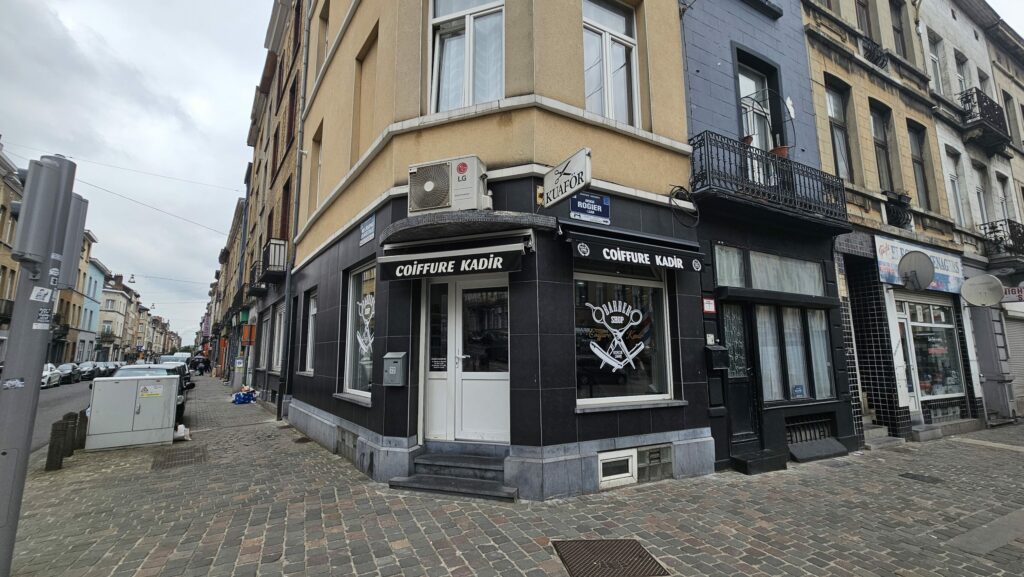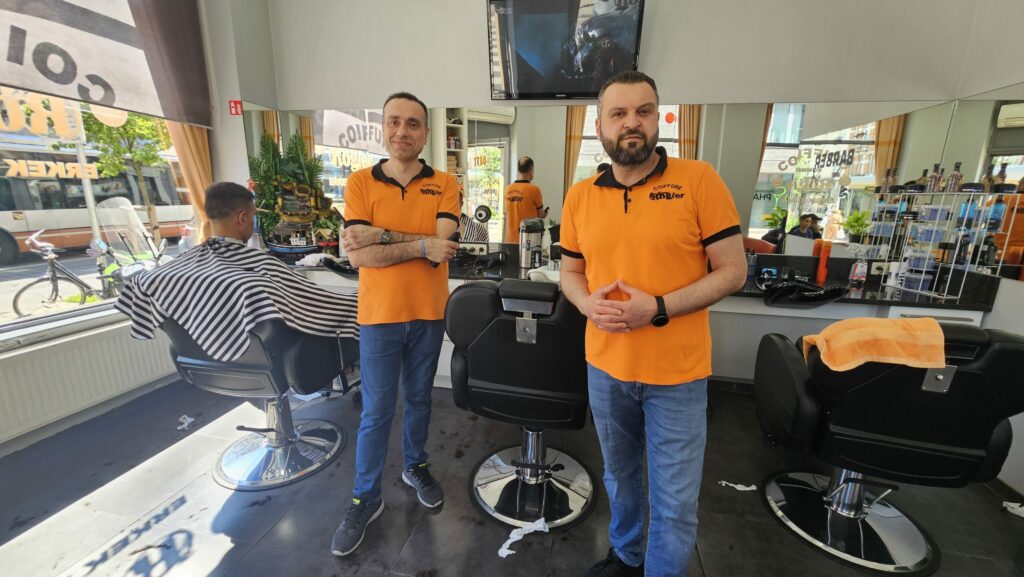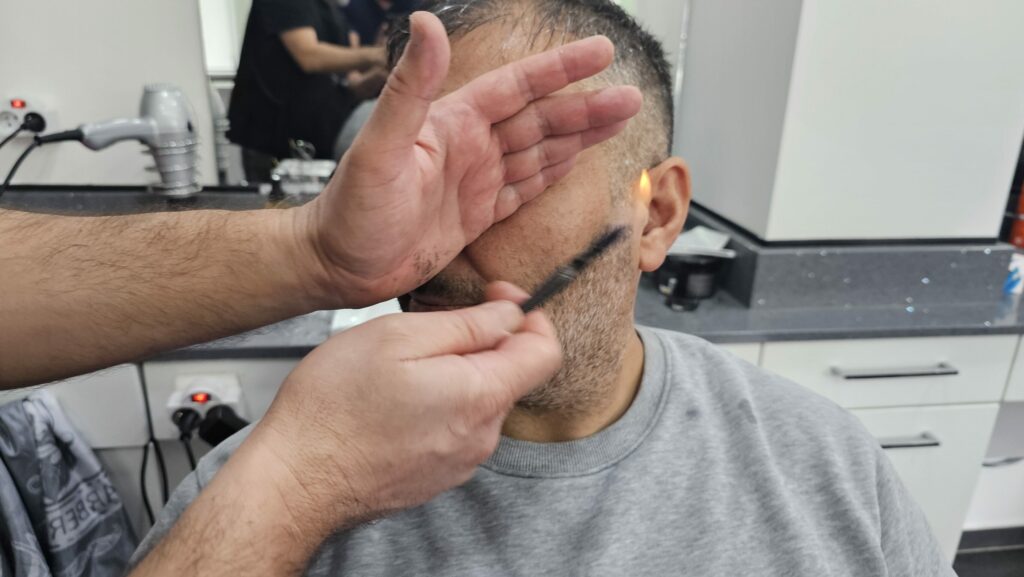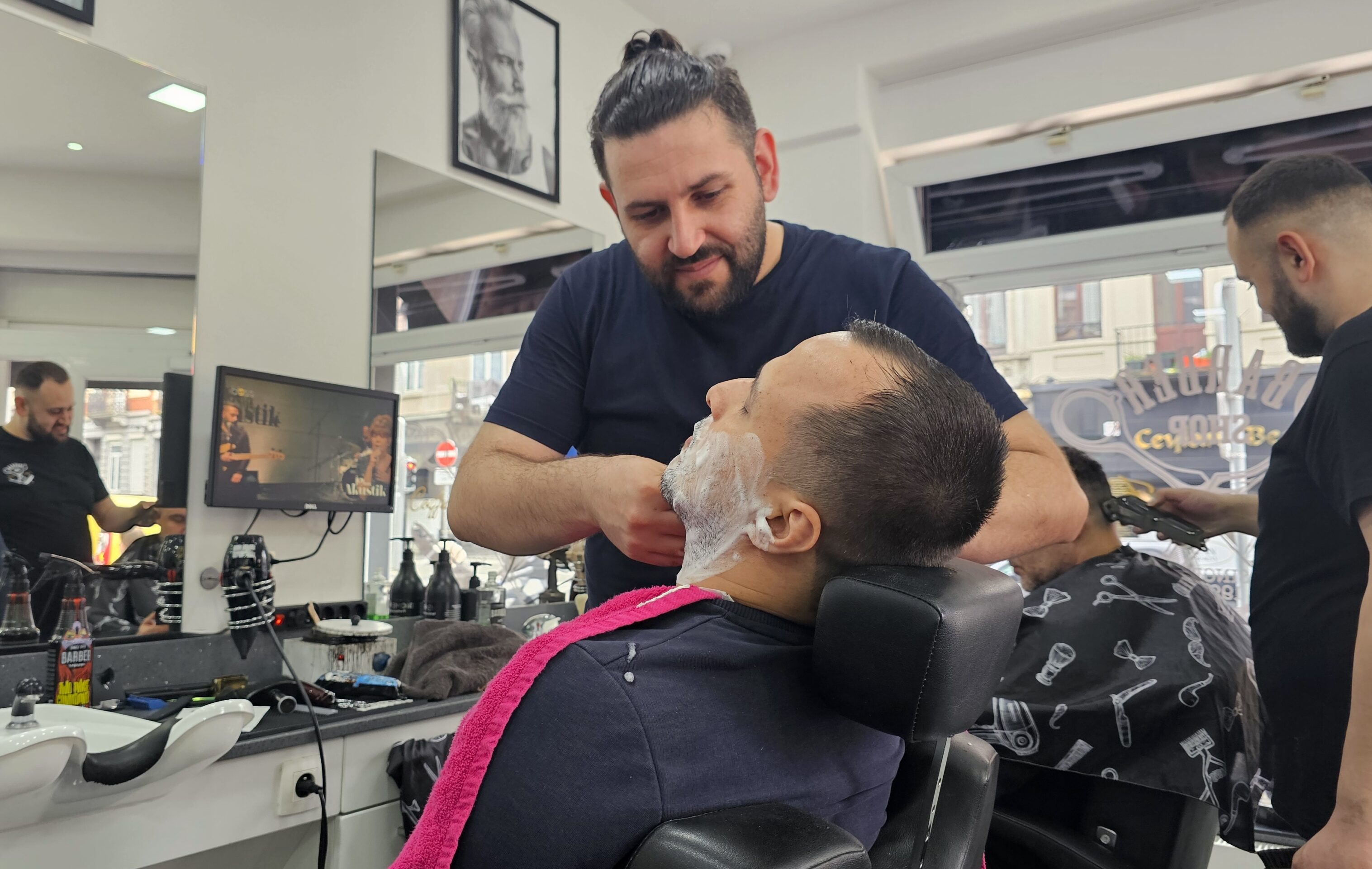Turkish barbers are efficient, amiable, exceptionally skilled, and offer top-notch services at a fraction of the price of a fancy downtown hairdressing salon. And they are taking over the Belgian high street.
Their services extend beyond mere haircuts, offering a range of treatments that can elevate the experience to a mini spa day for men. The pampering starts with a refreshing scalp massage using a special hair cologne blend and includes options like stylish beard trims, cheek waxing, blackhead clearing and even meticulous removal of ear and nose hair.
Most Turkish hairdressers are busy throughout the day and rarely bother advertising, instead relying on the power of word-of-mouth recommendations. But appointments are unnecessary. Walk in, and even on busy days, the wait rarely exceeds 20-30 minutes. Relax with a complimentary cup of Turkish tea as you peruse a magazine, awaiting your turn.
Some barbers are now pillars of the local community, like Kadir Arkaya, the 46-year-old owner of Coiffure Kadir in Scharbeek. In 1996, at just 18 years old, Arkaya became the youngest person in Belgium to open a barbershop. Today, he is the most experienced Turkish barber in the country. "More and more people have become aware of our services,” he says. “Once they try us, they don't want to go anywhere else because we take care of the ears and nose and use traditional Turkish soap and foam for the beard.”

Coiffure Kadir in Scharbeek.
Necdet Necdet, a 28-year-old Bulgarian Turk, took a four-year barber school education, a common practice among Belgian barbers. Currently employed at Coiffure Kadir, he initially honed his skills as a women's hairdresser. "I never considered any other profession. I love what I do,” he says.
On a typical busy day, Necdet attends to 20 to 30 customers. He says that Turkish barbers outpace their counterparts in terms of speed. “Customer satisfaction is paramount in our trade. The barbershop holds a special significance in our culture," he says.
What is the appeal for locals? “With us, customers feel empowered to express their preferences openly,” Needet says. “We prioritise their wishes and never impose our own. Our approach is always customer-centric, fostering an environment where clients feel comfortable voicing their preferences without hesitation."
Hüseyin Yapıcı, 40, another barber at Coiffure Kadir, says what truly captivates customers is the engaging chit-chat culture unique to Turkish barbershops. "It’s what they're seeking but can't find elsewhere," he says.
Many customers are drawn to Turkish barbershops after having their first haircut on a holiday in Turkey. "When they return from Turkey, they want to try it here in Belgium,” Yapıcı says. “Initially, they come alone, but once witness the same quality and efficiency of our work, they bring their children, and their friends soon follow suit.”
Yapıcı believes that Turkish barbershops serve as more than just places for grooming – they also act as ambassadors, challenging stereotypes and prejudices about Turkish people living in Belgium. "Our warm smiles and friendly conversations can completely change their perceptions," he says.

Coiffure Rogier
Halit Birilci, 48, who works at Coiffure Rogier, says about two in five customers are non-Turkish. "For men, visiting the barbershop is akin to a spa treatment. They enjoy all the services offered, especially the cut-throat razor and a hot towel and even a brief head and shoulder massage.”
Most Turkish barber prices range from €15 to 18, inclusive of a hair wash. With additional beard grooming, waxing, and ear treatment, this can rise to €25 – but it still compares favourably with Belgian salons, which can charge €30 for a haircut alone.
At Coiffure Kadir, Arnaud Vitre Tainter is a convert. “I love the way they shave beards with traditional-style razors,” says Tainter, a local woodworker who says he now only wants to go to Turkish barbers. “Also, the special ear hair burning is something you cannot find anywhere else. They even cut your eyebrows if needed. I didn’t even know such treatments existed.”
He is echoed by Aysun Karani, a 32-year-old store salesman. "All my relatives, every member of my family, frequents this barbershop," he proudly declares. "I wouldn't consider any other establishment. I've found my ideal spot."
Waxing and ear hair burning
Wax treatments are a popular Turkish grooming technique used to remove unwanted hair from various parts of the face, including the ears, nose, and sometimes even the cheeks or forehead.
Warm wax is applied with a wooden stick or cotton swab on the desired area. The wax is allowed to cool and harden slightly, gripping both fine and coarse hairs. Once the wax has set, the barber quickly yanks it away, removing the hair from the root. While this causes a brief jolt of pain, it is generally well-tolerated by most clients.
After waxing, the barber usually applies a soothing lotion or oil to calm the skin and reduce any redness or irritation, as well as moisturise.
Ear hair burning is a traditional technique that removes the hair down to the follicle level, potentially reducing the rate of regrowth. The barber prepares the area by cleaning and drying inside the ear – and sometimes applying a small amount of talcum powder to make the fine hairs more visible and to protect the skin.

A delicate procedure that requires precision. And steady hands.
A small, handheld, gas-powered lighter or a lit taper (a thin candle or piece of waxed thread) is then brought close to the ear, with the flame singing the hair without burning the skin. The flame is flicked rapidly to catch the fine hairs.
Once the hair is singed, the barber may wipe the area with a damp cloth to remove any burnt hair residue. Sometimes, a soothing lotion or aftershave is applied to calm the skin.

